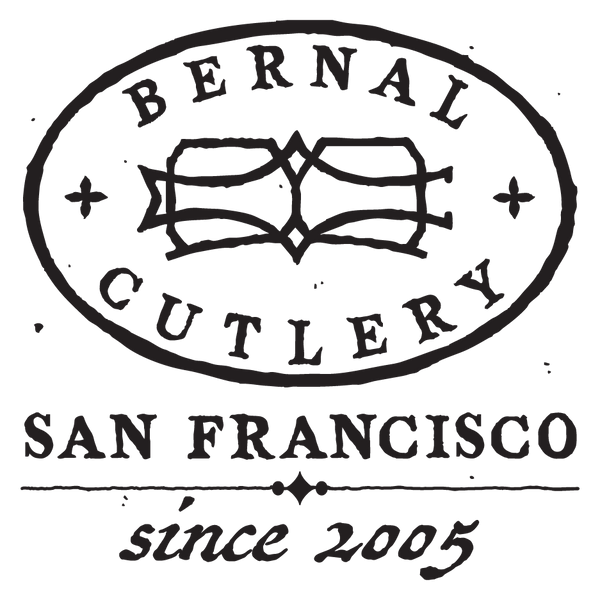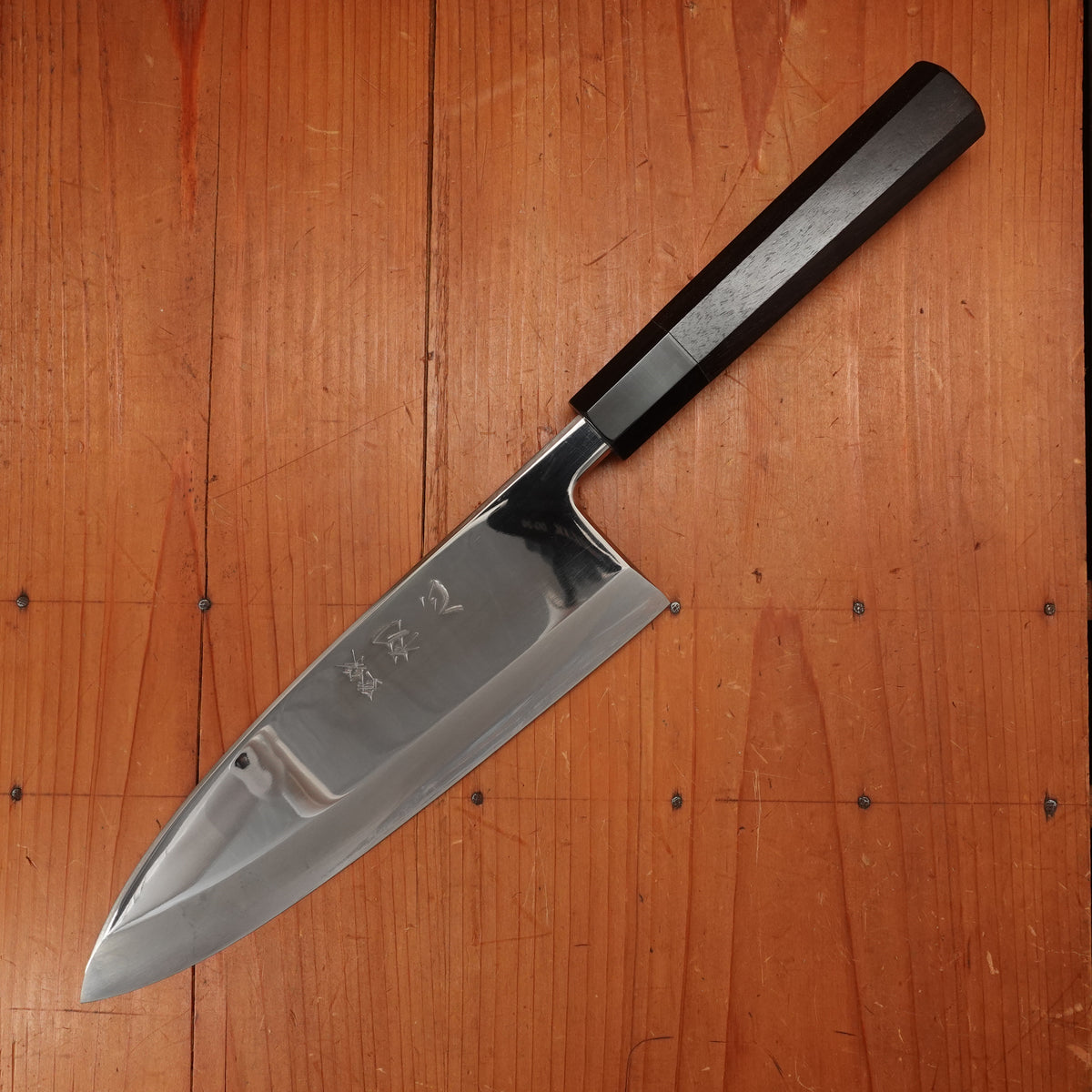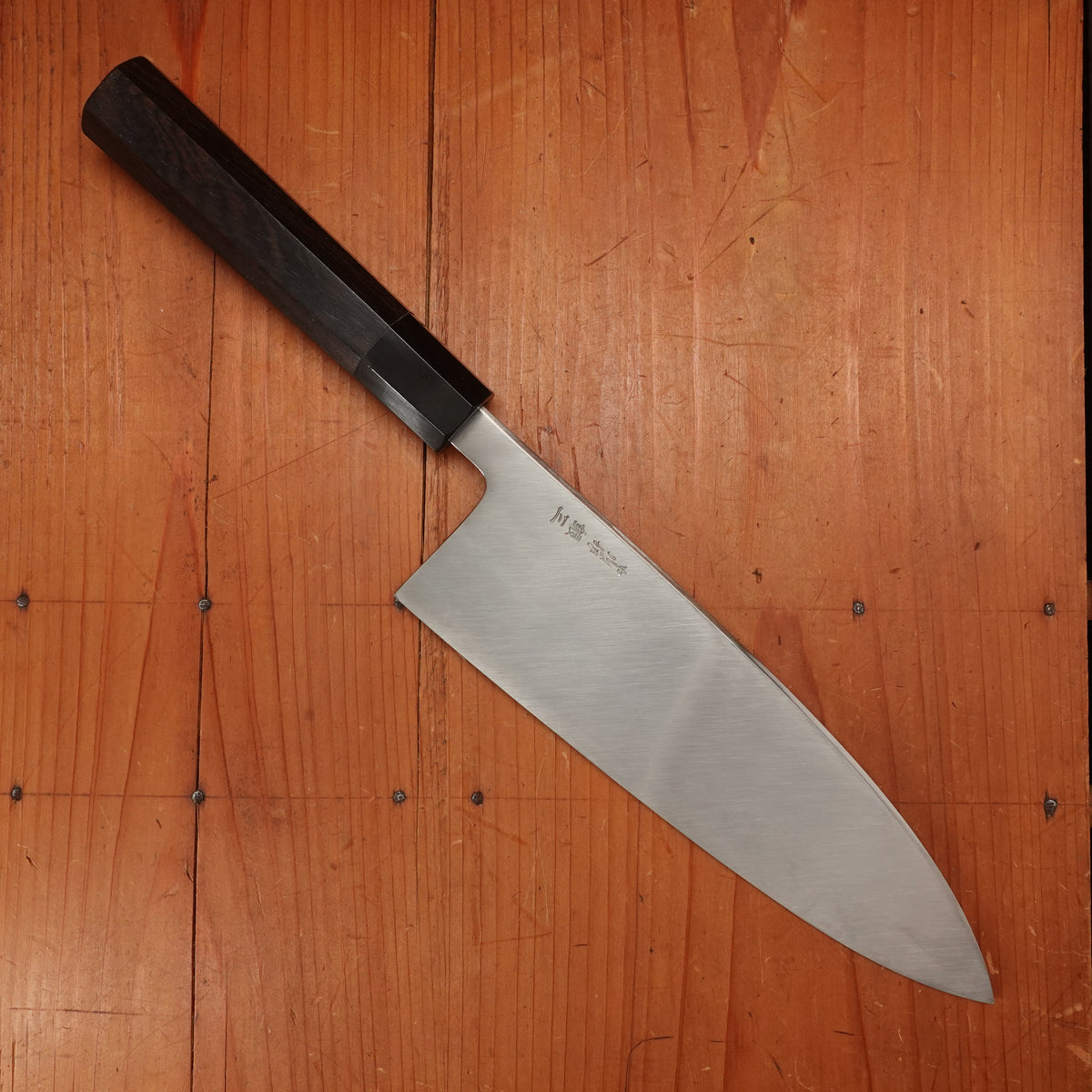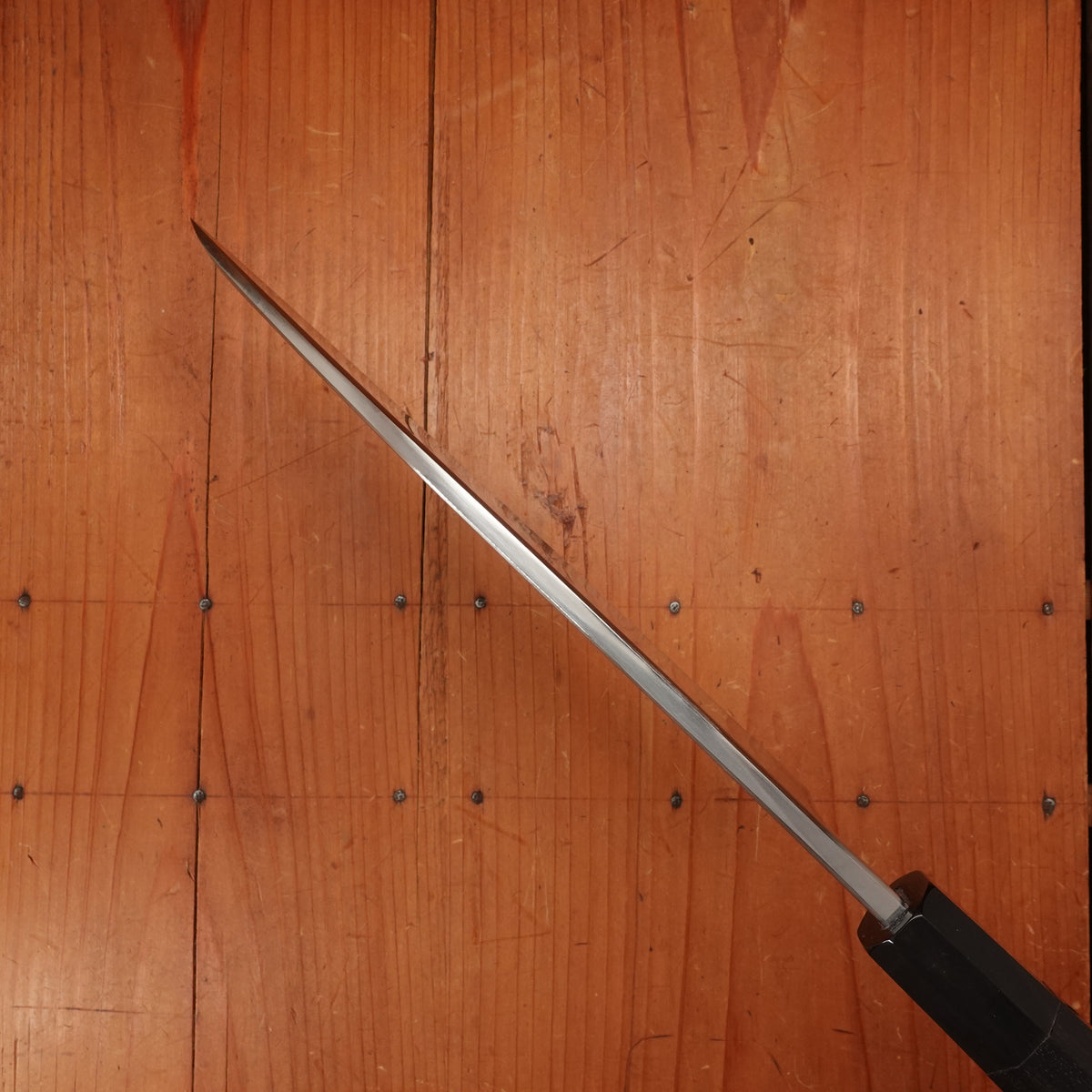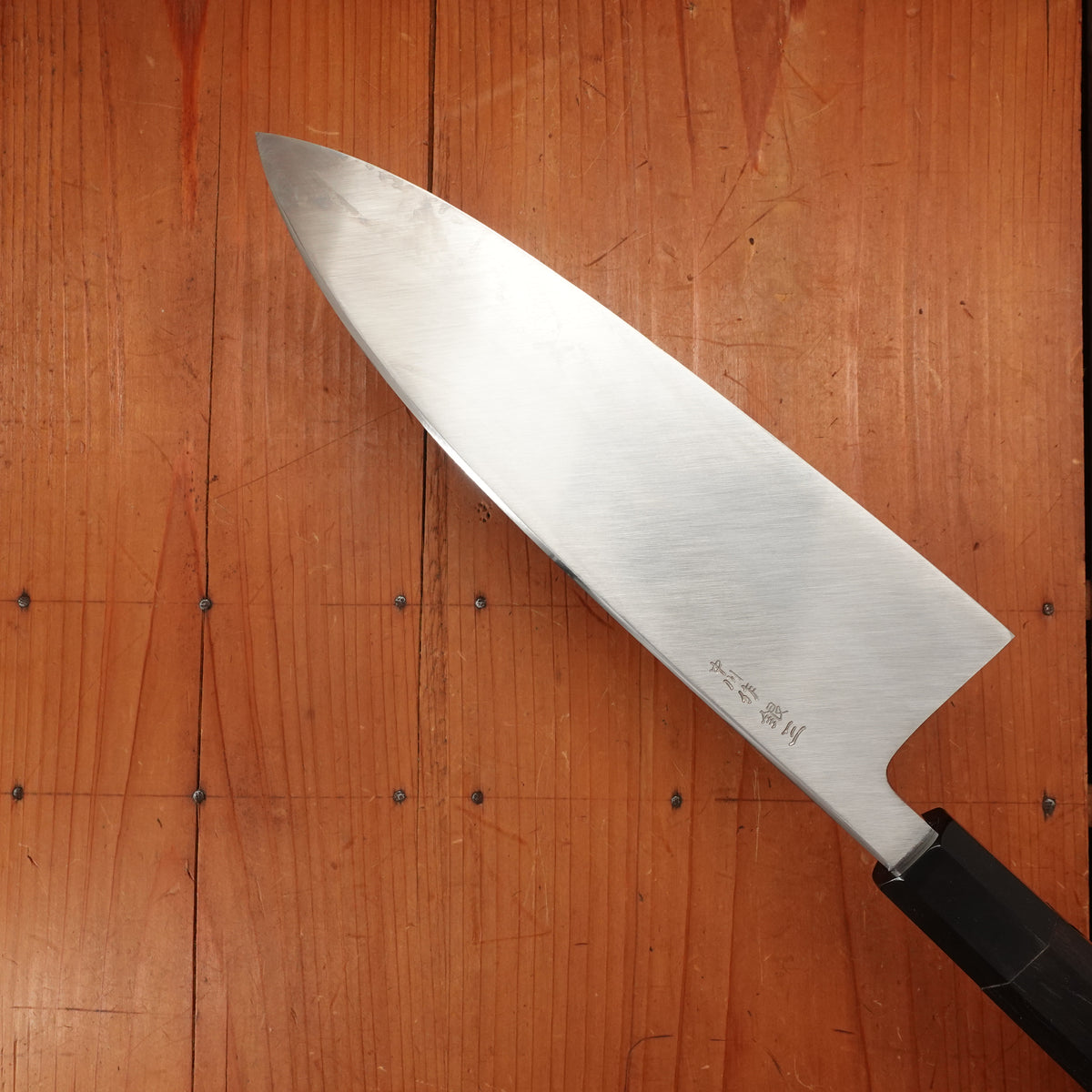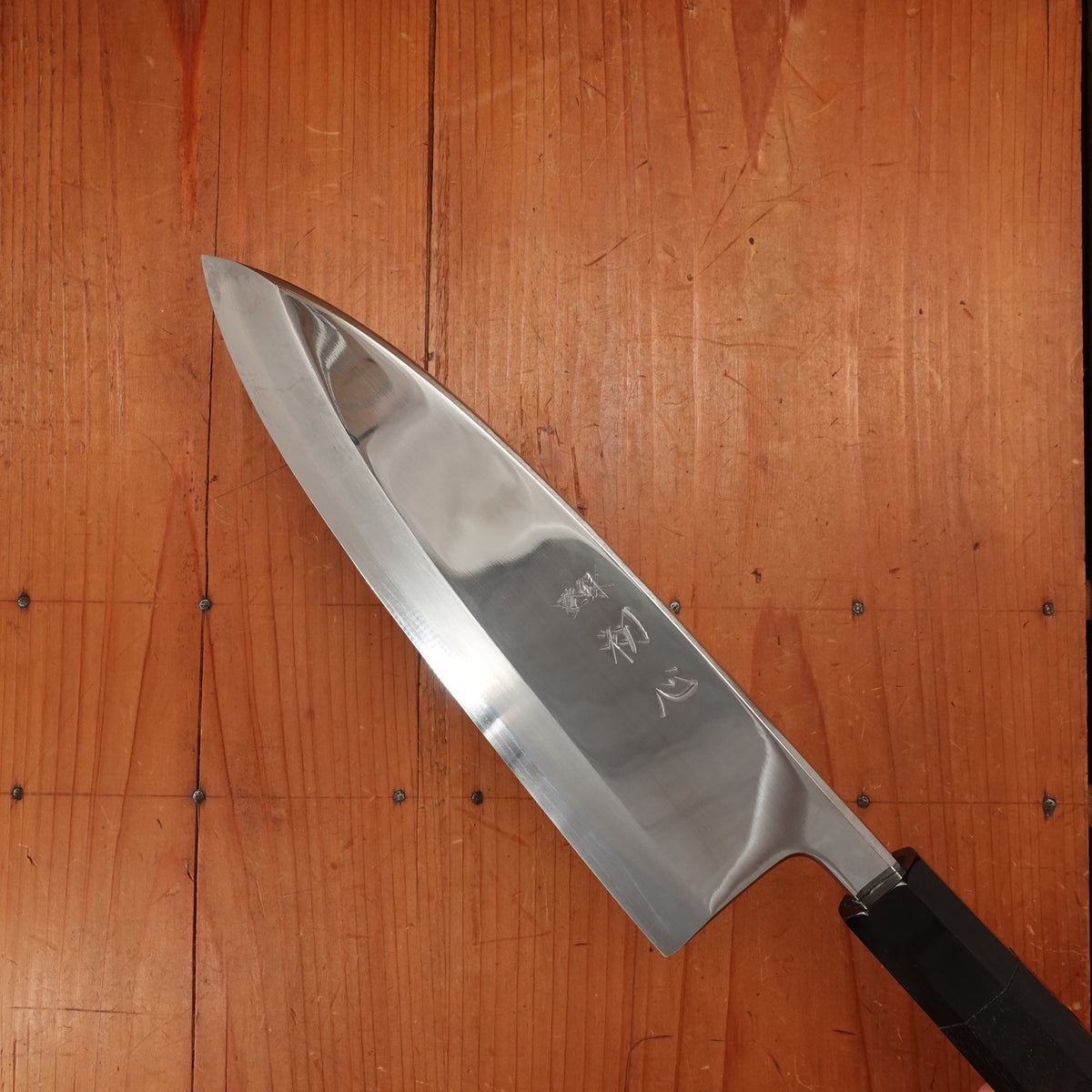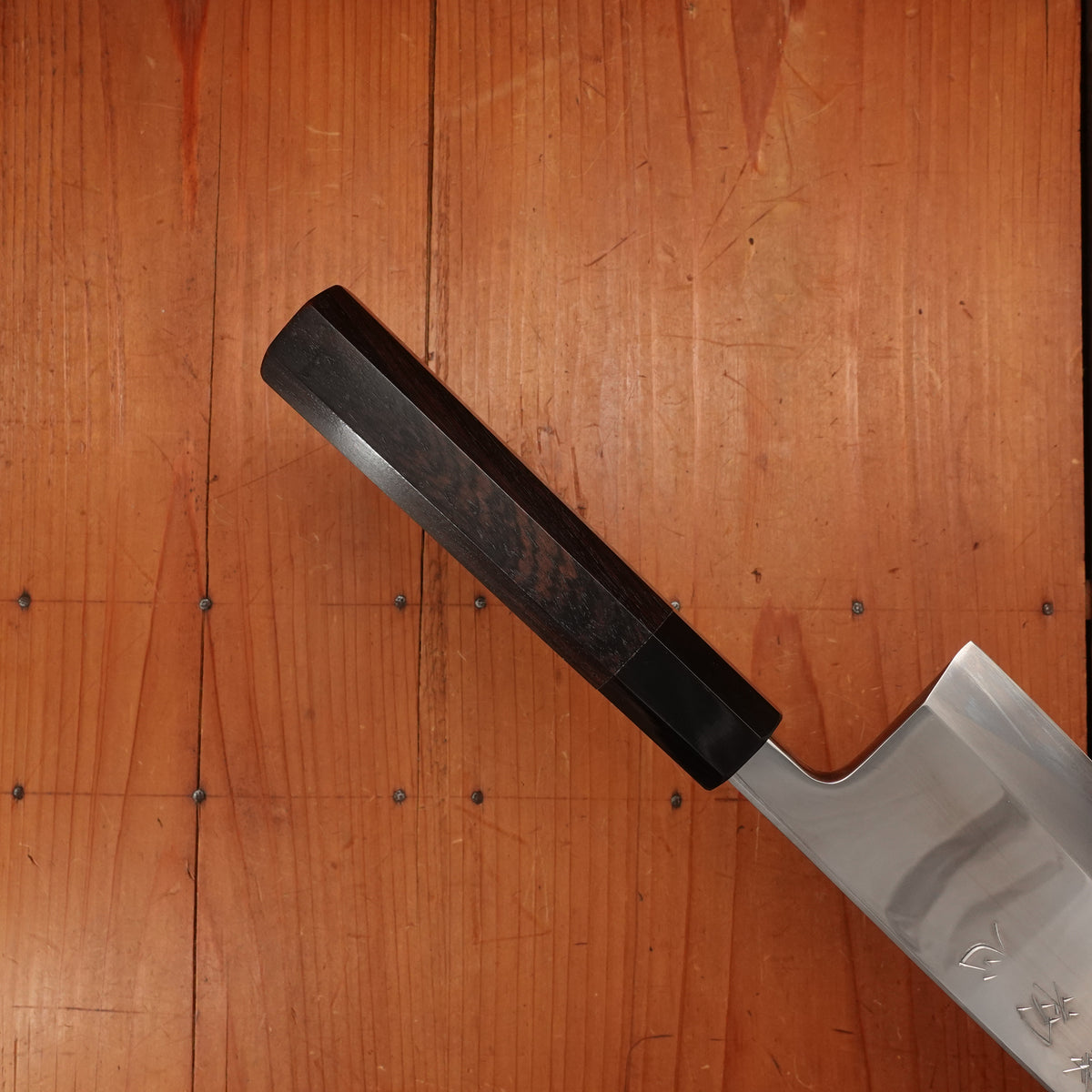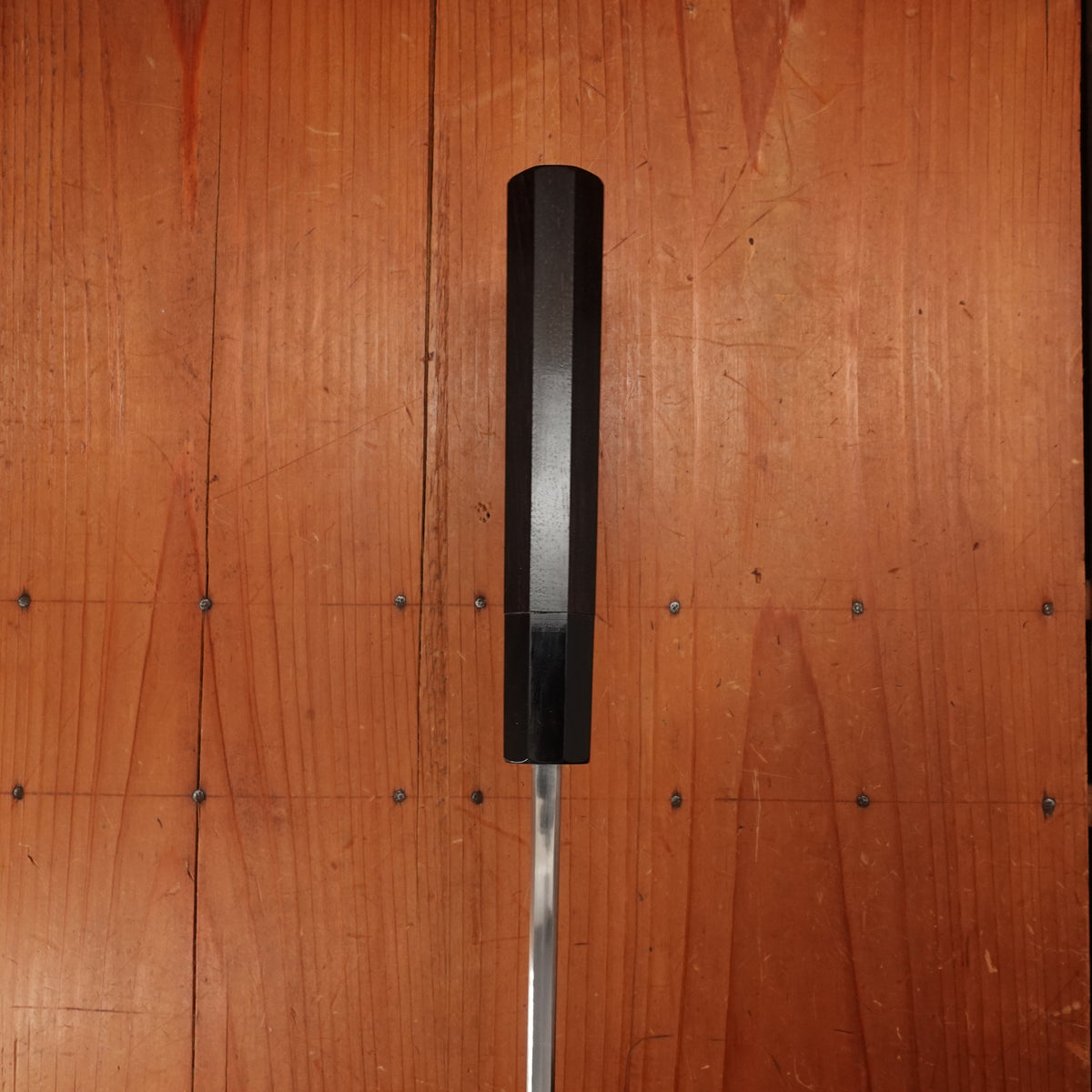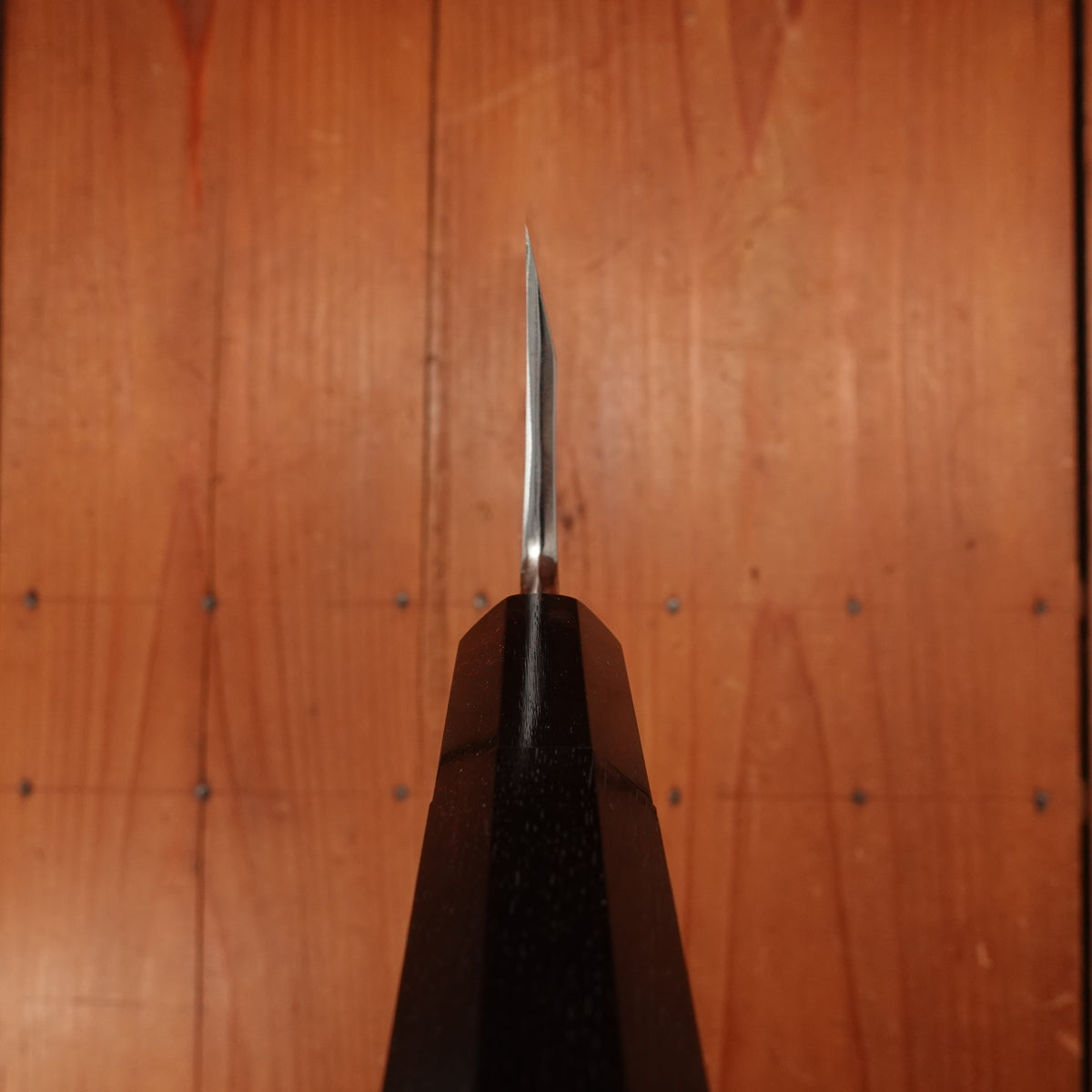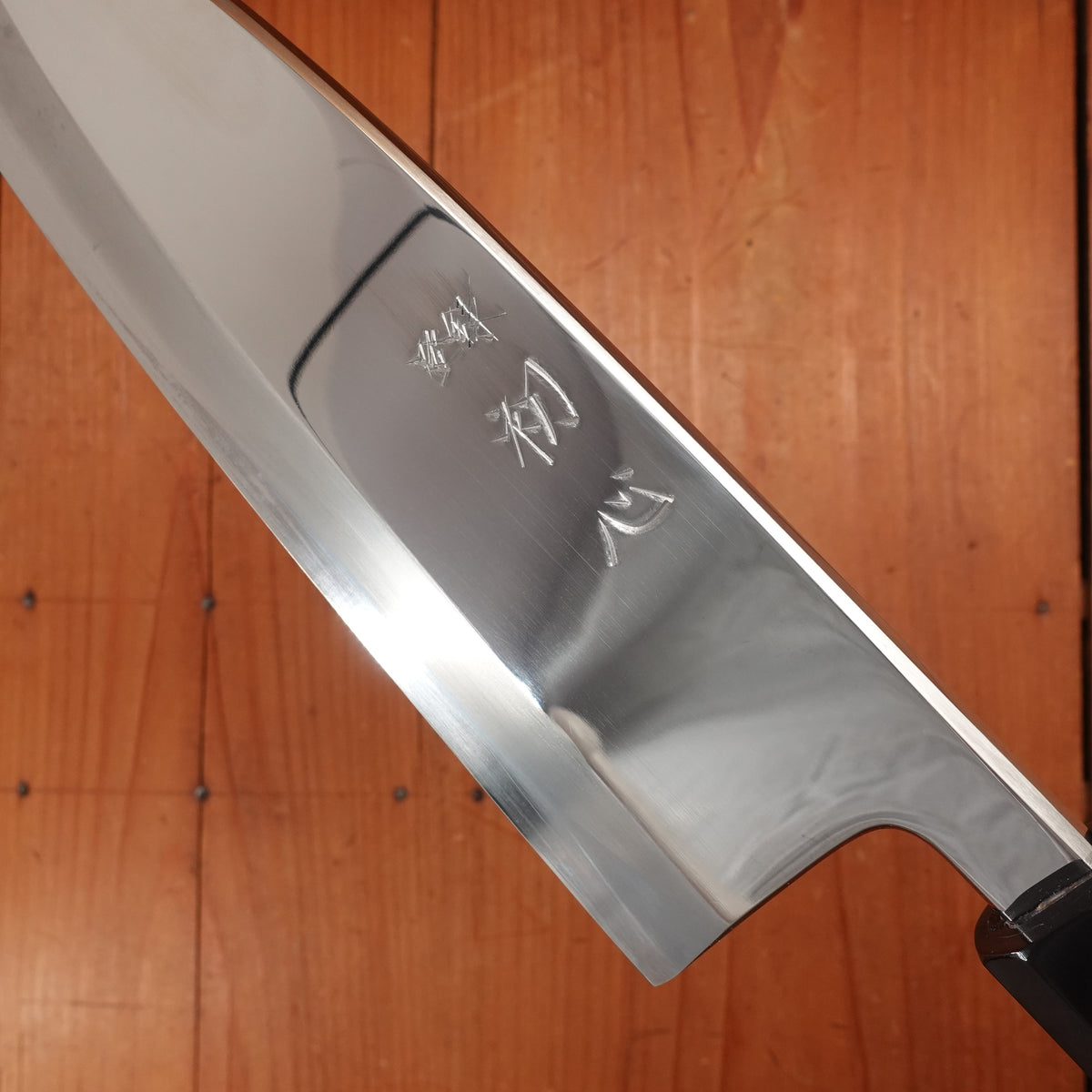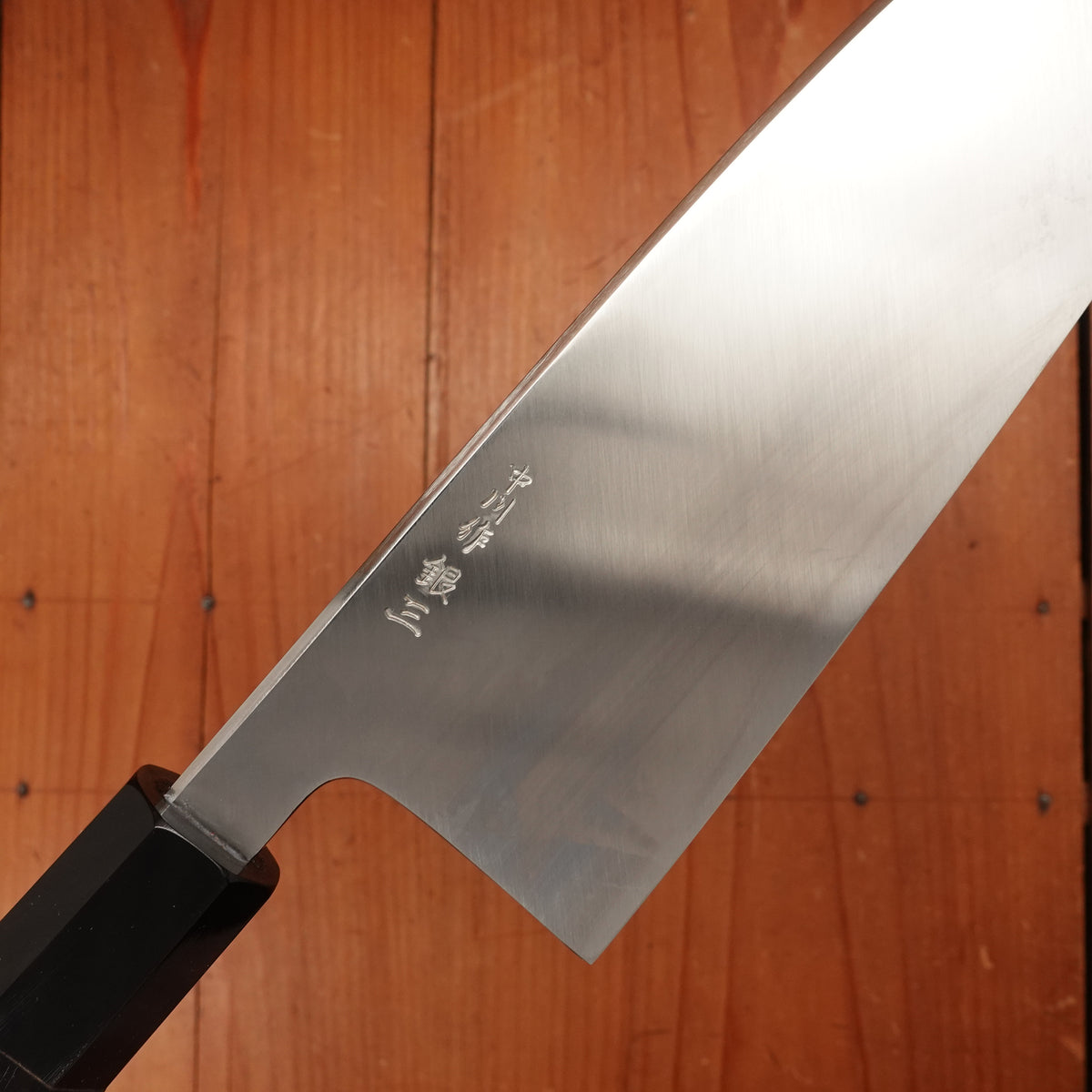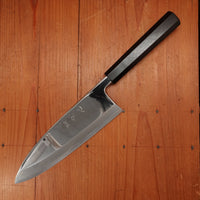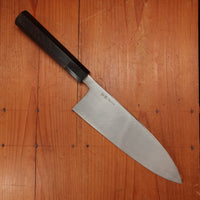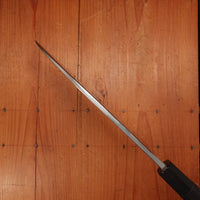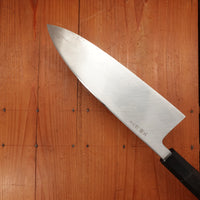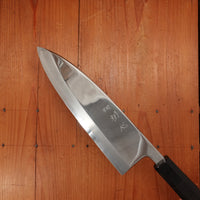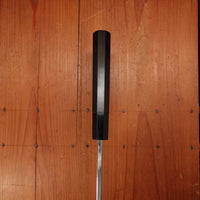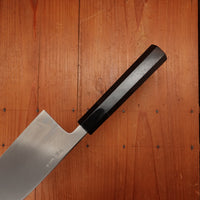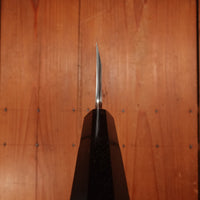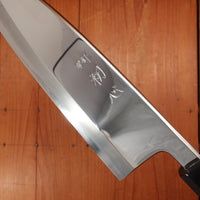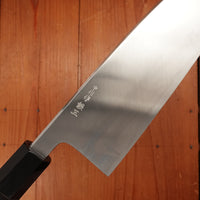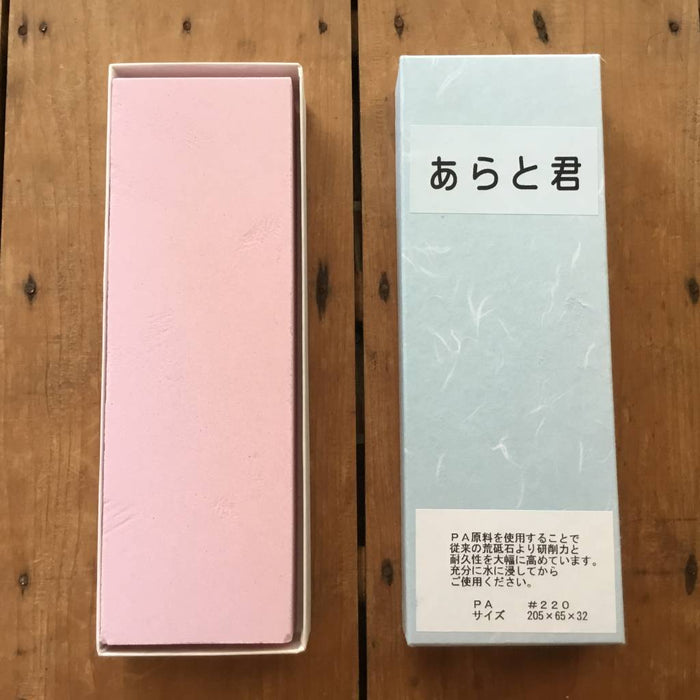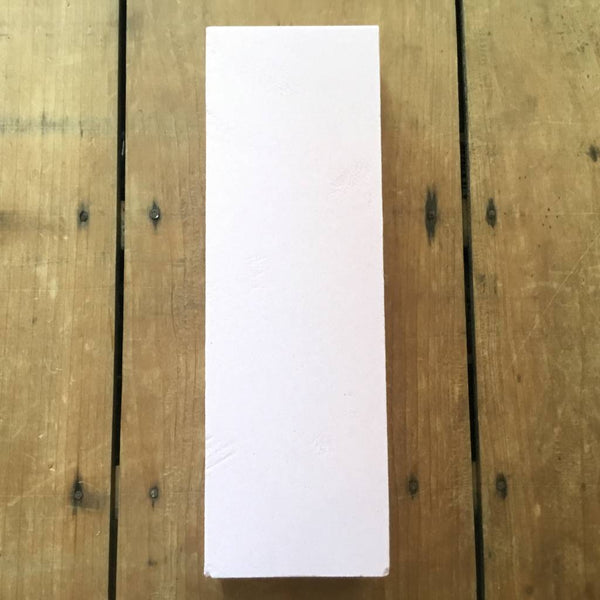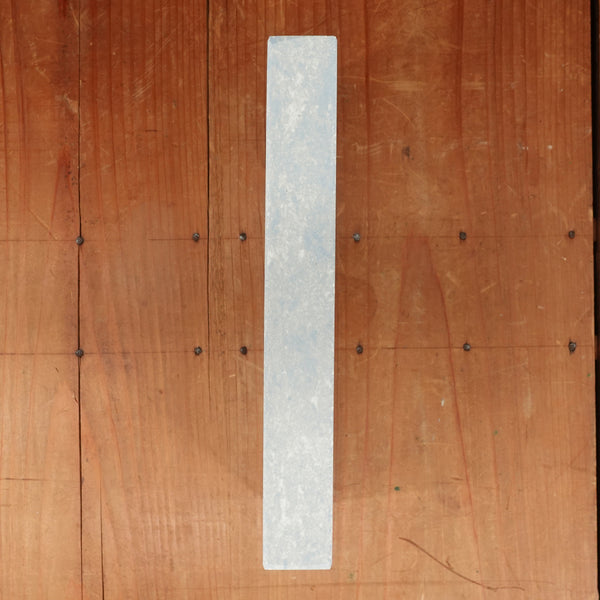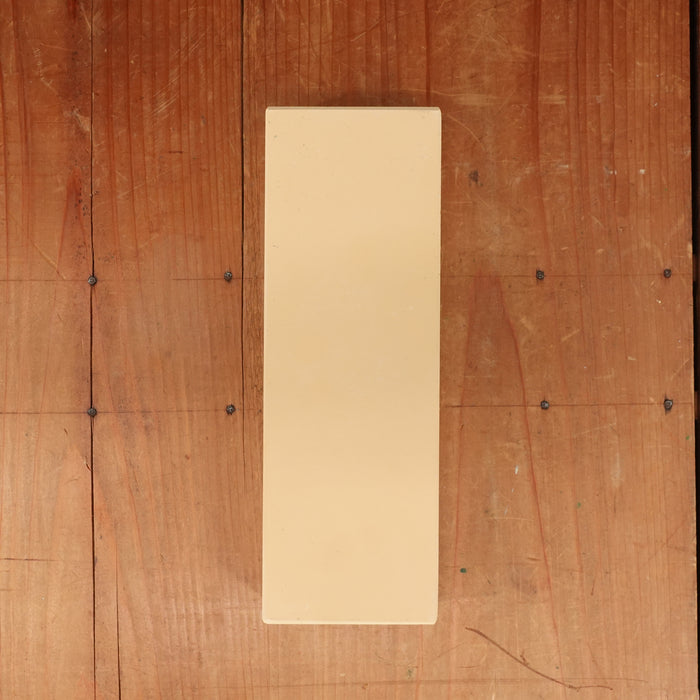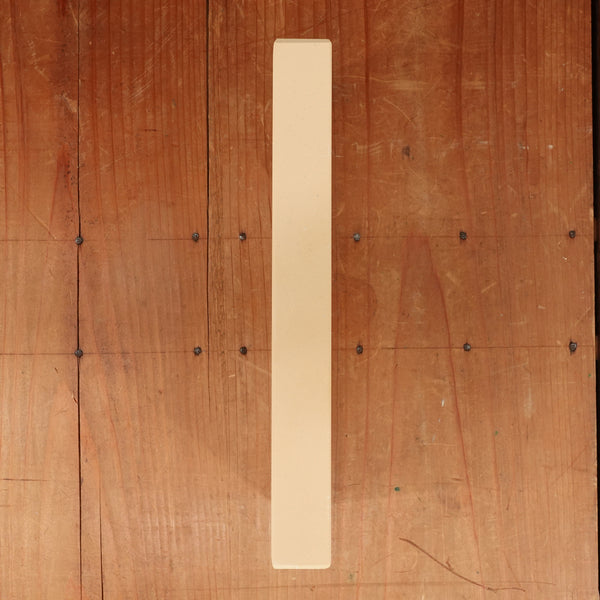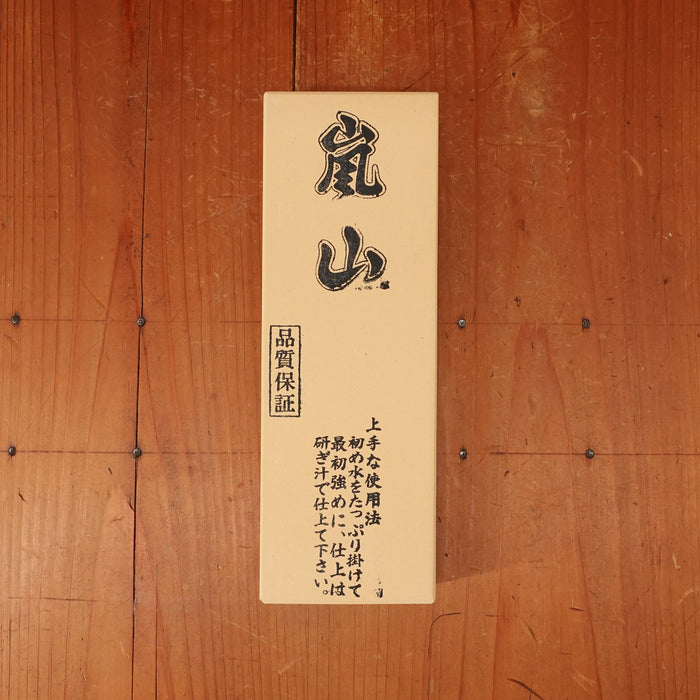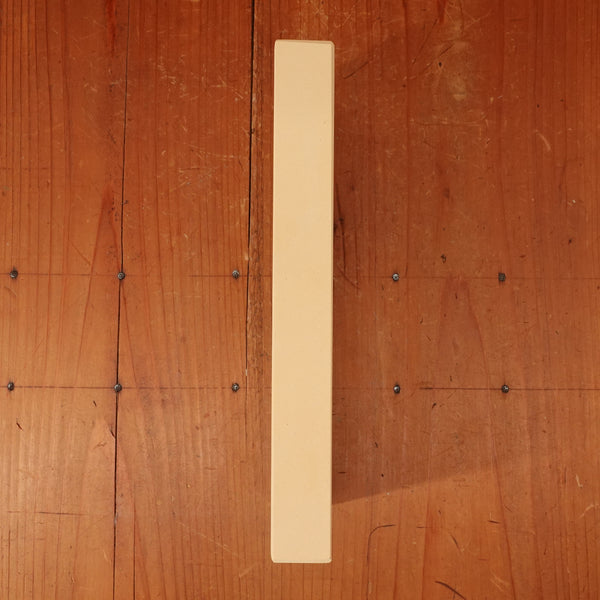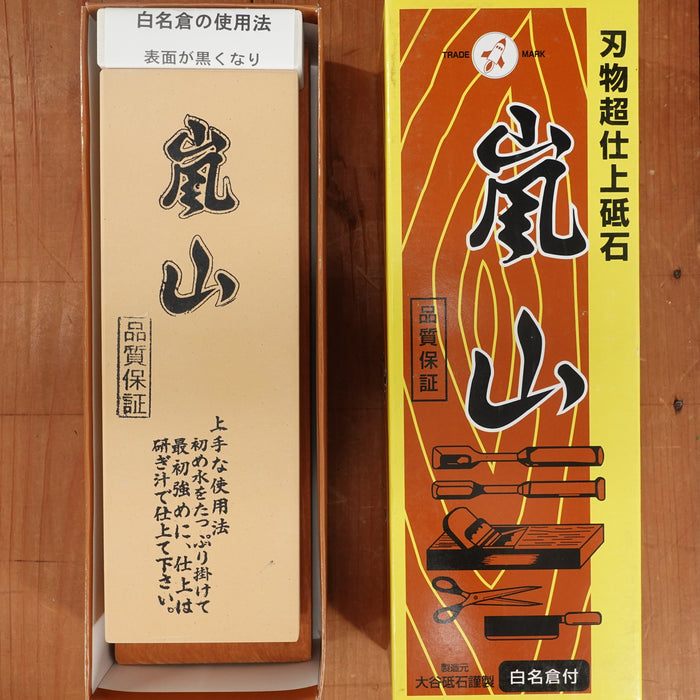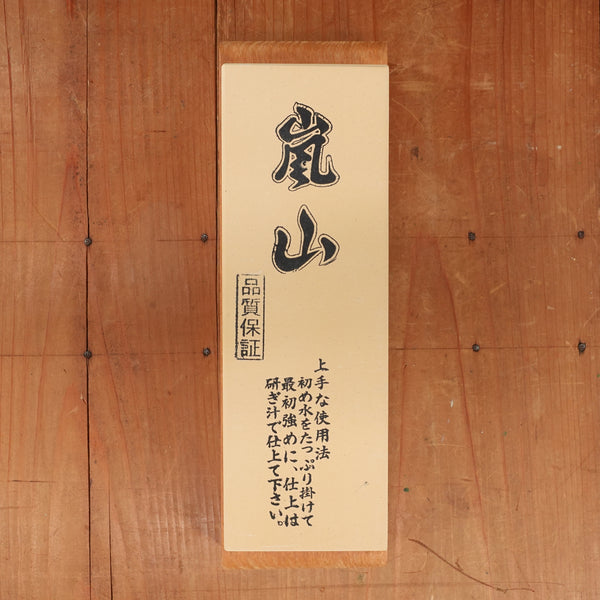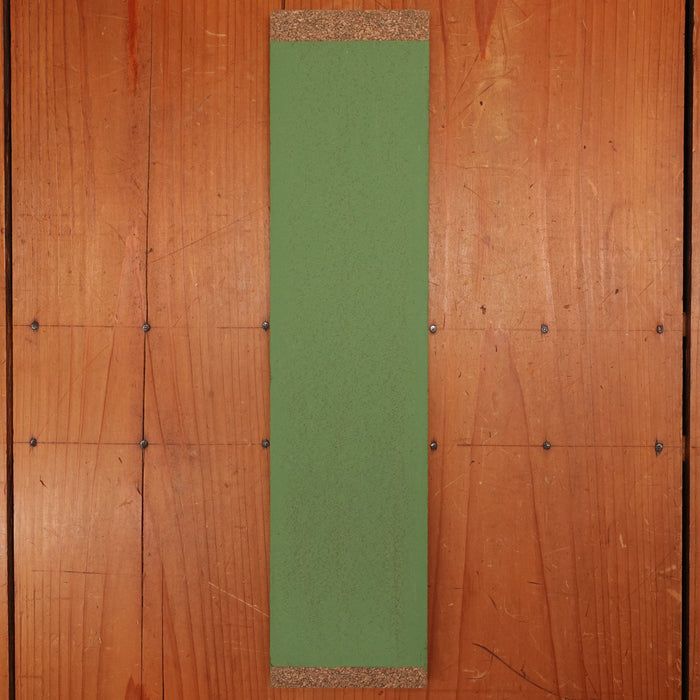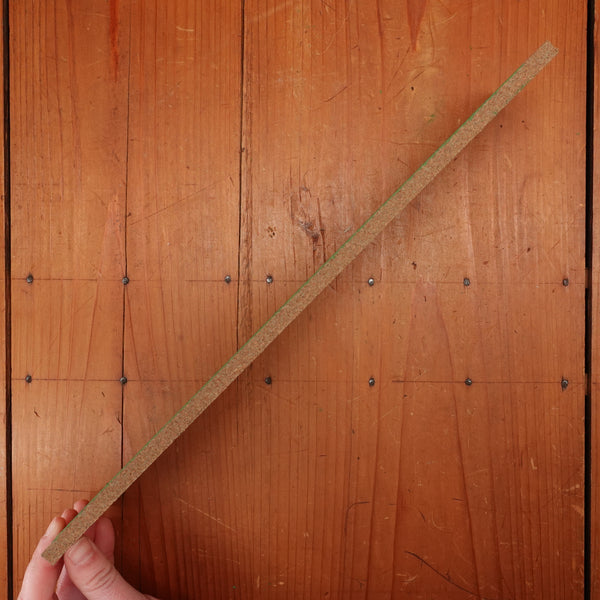Hatsukokoro Nakagawa 210mm Deba Ginsanko Kyomen Ebony Black Buffalo Horn - LEFTY
-
Regular Price
-
$1,194.70
-
Sale Price
-
$1,194.70
-
Regular Price
-
Sold Out
-
Unit Price
- per
- Regular Price
- $1,194.70
- Sale Price
- $1,194.70
- Regular Price
- Unit Price
- per
Deba are intended for fish butchery. It is a heavy knife that is capable of fine and tough work but is not designed for other types of butchery and can chip on thick bones if used incorrectly.
Nakagawa-san's knives are characterized by excellent heat control during forging and a very thorough heat treatment creating knives that have superb edge formation and edge life with good toughness. His carbon steels are usually easy to sharpen across most steel types. Nakagawa-san's reputation as one of a few blacksmiths in Sakai to forge Ginsanko and VG10 stainless steels that results in excellent edge life and toughness is well earned.
The sharpener on this series is credited as Kawakita Hamono operated by Kazumi Kawakita. Kawaita-san is a famed master sharpener who lists many notable and well-respected Sakai sharpeners as former students. Notably Morihiro who pioneered putting traditional Sakai wide bevels on double bevel wa-hochos. He was the sole sharpener of the Konosuke Fujiyama line (until 2018) and also works on the Sakai Kikumori Choyo series as well as a credited grinder for Nakagawa and other projects from Sakai.
This knife will perform best at a lower finish polish, 3-4K being the best edge for fish butchery.
About This Knife


Listed Length: 210mm
Total Length: 371mm
Edge Length: 215mm
Heel Height: 60mm
Spine Thickness: 6.6mm
Weight:
Orientation: Left-handed
Blade Type: Stainless Steel
Steel Type: Ginsanko (Silver #3)
Steel Hardness (HRC): undisclosed
Maintenance: Less Attention
Handle Type: Japanese (wa)
Handle Material: Ebony & Horn Ferrule
Dive Deeper
Medium-fine Single Bevel
Sharpening Supplies
Stones & Accessories selected specifically for this knife.
Arato-kun #220 Extra Coarse Grit Whetstone
- Regular Price
- $52.68
- Sale Price
- $52.68
- Regular Price
-
- Unit Price
- per
Bernal Cutlery Takarazukushi 1200 Grit Blue Marble Semi-Soft Ceramic Japanese Whetstone
- Regular Price
- $114.67
- Sale Price
- $114.67
- Regular Price
-
- Unit Price
- per
Bernal Cutlery Takarazukushi 4000 Grit Yellow Semi-Hard Resinoid Japanese Whetstone
- Regular Price
- $127.06
- Sale Price
- $127.06
- Regular Price
-
- Unit Price
- per
Arashiyama #6000 Whetstone Stone NO Wooden Base
- Regular Price
- $89.87
- Sale Price
- $89.87
- Regular Price
-
- Unit Price
- per
Arashiyama #6000 Whetstone With Nagura Stone and Wooden Base
- Regular Price
- $96.07
- Sale Price
- $96.07
- Regular Price
-
- Unit Price
- per
Bernal Cutlery Monodiachrome™ Precharged Deburring Strop
- Regular Price
- $61.98
- Sale Price
- $61.98
- Regular Price
-
- Unit Price
- per
Ginsanko (Silver #3)

